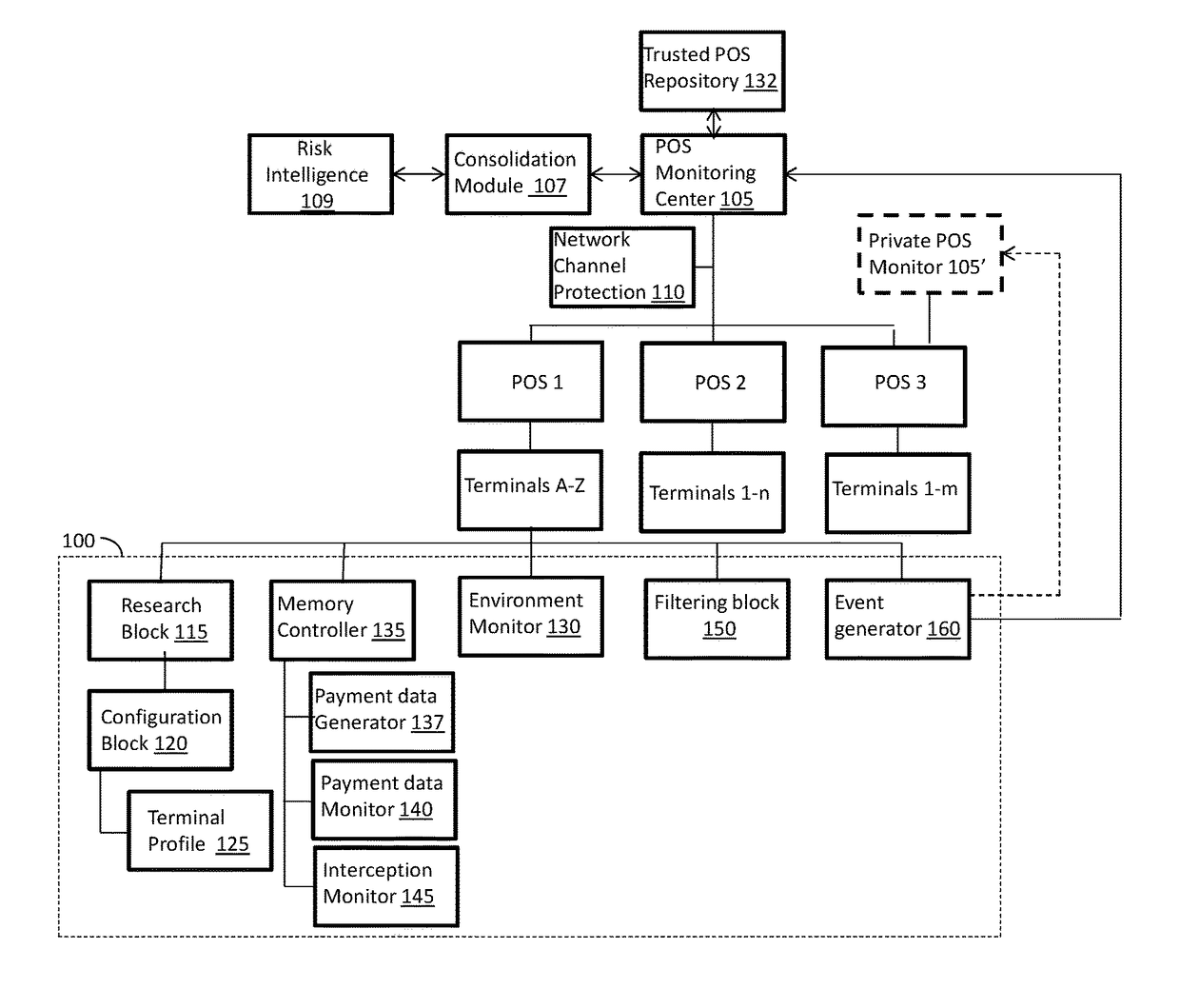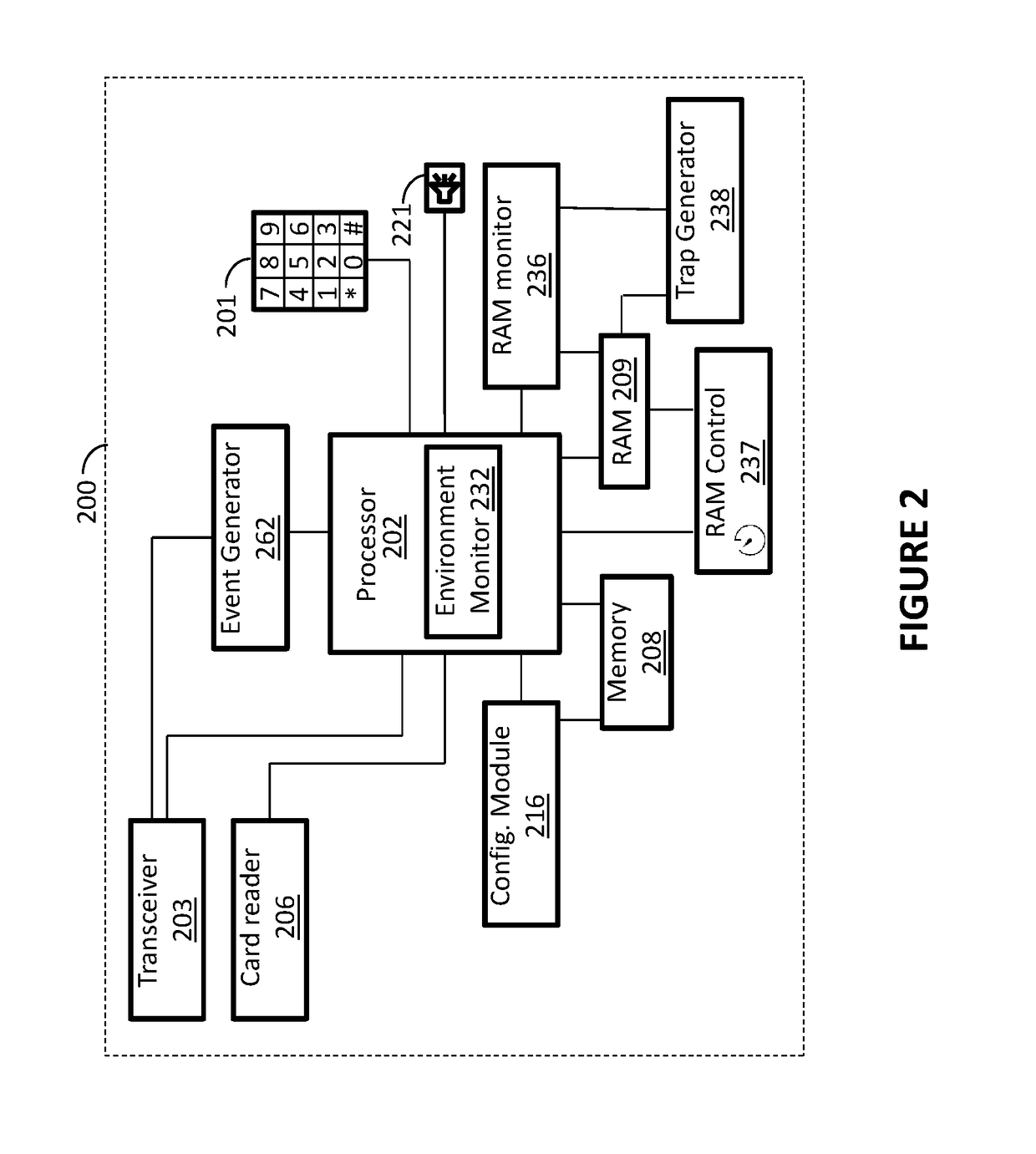Point-of-sale cybersecurity system
a security system and point-of-sale technology, applied in the field of security protection of point-of-sale terminals and systems, can solve the problems of increasing the threat of such type of devices, interception of payment and other types of data, and the significant growth of retail and small business having pos terminals, so as to achieve the effect of easy reading and sending
- Summary
- Abstract
- Description
- Claims
- Application Information
AI Technical Summary
Benefits of technology
Problems solved by technology
Method used
Image
Examples
Embodiment Construction
[0026]By default, POS systems don't have any cybersecurity components, but rather providing just mechanism for transactions management. Some of the systems may have embedded hardware security and electronic security components, mostly targeted at physical security of the terminal from any harmful activity. However, the latest trends show that the POS infrastructure is vulnerable to multivector cyber attacks, targeted at payment data exfiltration, i.e., reading and forwarding the track data.
[0027]The following detailed description of aspects of the invention provides for adding cybersecurity component onto the POS system, thereby preventing local and remote cyber attacks against POS terminal or their group. The disclosed embodiments provide a multi-pronged approach to terminal security, including detecting malware attack on a terminal, detecting skimmer or tampered devices (having connection with the terminal) or other “hardware” attacks on a terminal (especially attacks targeting Tr...
PUM
 Login to View More
Login to View More Abstract
Description
Claims
Application Information
 Login to View More
Login to View More - R&D
- Intellectual Property
- Life Sciences
- Materials
- Tech Scout
- Unparalleled Data Quality
- Higher Quality Content
- 60% Fewer Hallucinations
Browse by: Latest US Patents, China's latest patents, Technical Efficacy Thesaurus, Application Domain, Technology Topic, Popular Technical Reports.
© 2025 PatSnap. All rights reserved.Legal|Privacy policy|Modern Slavery Act Transparency Statement|Sitemap|About US| Contact US: help@patsnap.com



